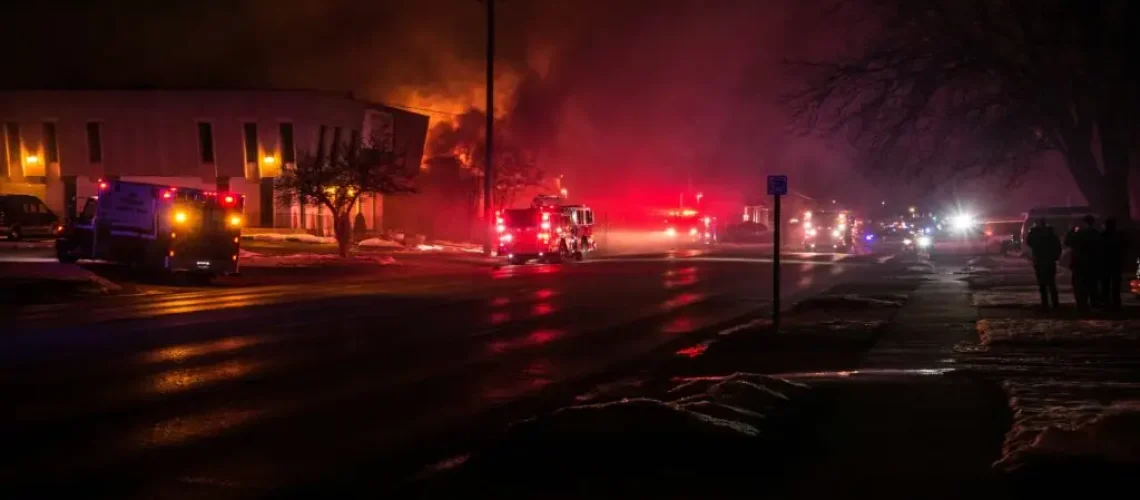Home electrical fires are among the most common types of home fires, and they often start from concealed dangers within the walls. The principal causes are unsafe wiring, overloaded circuits, and insufficient or outdated electrical panels. These are all hazards that a homeowner can inspect for—even if you’re not a professional, family members can help you look for signs of danger. And electrical home fires are relatively easy to prevent compared with other types of fires. In this article, we’re going to examine the causes of home electrical fires in detail. Then we’ll talk about prevention measures, and we’ll end with how to look for warning signs in a home you suspect is at risk.
1. How Faulty Wiring, Overloaded Circuits, and Outdated Panels Contribute to Electrical Fires
Faulty Wiring
Wiring systems can deteriorate with time, either due to age, physical damage, or improper installation, thereby creating unsafe conditions that increase the chance of electrical fires.
- Frayed or Exposed Wires:
When insulation gets damaged, it can expose the wires underneath, which are then easily subjected to short circuits or direct contact with flammable materials, increasing fire hazards. - Improper Splices and Loose Connections:
Unprofessional wiring installations—often seen in DIY projects—may cause loose connections, which produce heat and can therefore start fires. - Outdated Wiring Systems:
Homes with knob-and-tube or aluminum wiring systems are at an even greater risk. The outdated systems were not designed to meet the electrical needs of modern appliances and tend to overheat easily.
Overloaded Circuits
With the rise of home electronics, most houses—especially older ones—weren’t built to carry today’s electrical load. This can lead to overloaded circuits, resulting in overheating or failure of circuit breakers that may result in fire.
- Excessive Use of Extension Cords and Power Strips:
Too many appliances being plugged into extension cords or power strips give a wrong impression, so the overloading of those circuits can lead to conductor overheating and hence might cause a fire. - Overloaded Outlets:
Plugging in several high-wattage devices into one outlet, such as space heaters, air conditioners, or microwaves, can put strain on wiring and cause it to heat up.
Outdated Electrical Panels
Old electrical panels may not have the capacity to handle modern electrical needs and may not have the necessary safety features to prevent fires built-in.
- Fuse Boxes:
Older homes using fuse boxes can be quite dangerous, as fuses may be replaced with higher amp versions that cause overloads, which then cause fires. - Inadequate Circuit Breakers:
Even in houses with up-to-date circuit breaker panels, ancient systems can have breakers too small to cope with today’s demands, which can cause dangerous overheating.
2. Practical Tips for Homeowners to Reduce Fire Risks
Though electrical concerns can be a source of worry, homeowners can actually take some actions to assist in lowering the risk of having electrical fires.
Avoid Overloading Circuits
- Distribute Power Use:
Avoid overloading a single circuit with too many high-wattage appliances. Space heaters and refrigerators should be distributed among different circuits to avoid overloading. - Use Power Strips Safely:
Never connect multiple power strips together. Use strips with built-in circuit breakers to prevent overheating.
Inspect and Maintain Electrical Outlets and Cords
- Check for Warm or Discolored Outlets:
Outlets that are warm to the touch or show discoloration can signal an electrical problem that should be checked right away. - Replace Damaged Cords:
Replace frayed or damaged cords on appliances. Exposed wires can spark and start fires.
Install GFCIs and AFCIs
- Ground Fault Circuit Interrupters (GFCIs):
Install GFCIs in moisture-prone areas like kitchens and bathrooms. These outlets can cut power when a ground fault is detected, reducing the risk of electric shock and fire. - Arc Fault Circuit Interrupters (AFCIs):
AFCIs detect dangerous electrical arcs that could start a fire. These devices are critical in bedrooms and living rooms. Upgrading to GFCI and AFCI outlets can significantly reduce fire risks.
Schedule Regular Electrical Inspections
- Annual Checkups:
Have a licensed electrician inspect your home’s wiring and electrical panel regularly, especially in older homes. Early detection of problems can prevent serious hazards. - Upgrade Outdated Systems:
If your home still uses knob-and-tube wiring, aluminum wiring, or a fuse box, consider upgrading to modern systems that meet today’s electrical safety standards.
3. What Inspectors Look for to Identify Electrical Fire Hazards
During home inspections, inspectors carefully evaluate electrical systems to spot potential fire risks. Here’s what they focus on:
Wiring Condition
Inspectors examine the condition of exposed wiring in the attic and basement or crawl space. They specifically look out for older systems like knob-and-tube and aluminum wiring and wires with worn insulation now exposed, and wires otherwise showing evidence of overheating.
Breaker Panel Evaluation
The electrical panel is a critical area for fire risk assessment. Inspectors check for:
- Overloaded Circuits:
Inspectors look for signs of circuits being overloaded, which occurs when too many devices are plugged into a single circuit. - Double-Tapped Breakers:
A double-tapped breaker, where two wires are attached to one breaker, is a common wiring mistake that can lead to overheating and fires. - Old Panels:
Outdated or malfunctioning electrical panels may need replacement to meet modern safety standards.
Outlets and Fixtures
Inspectors check outlets and fixtures to ensure they are working safely. They look for:
- Ungrounded Outlets:
Older homes may have two-prong, ungrounded outlets that do not protect against electrical faults. - GFCI and AFCI Outlets:
Inspectors ensure that GFCI and AFCI outlets are correctly installed in areas where moisture or fire risks are higher, such as kitchens, bathrooms, and bedrooms. They will also test these outlets to ensure they function properly.
Heat Detection Tools
In some cases, inspectors use infrared thermography to detect heat patterns in wiring, walls, and outlets. This tool helps uncover hot spots that could indicate an electrical problem before they become visible or cause damage.
Conclusion
Electrical fires are a real threat, but understanding the risks—from faulty wiring and overloaded circuits to outdated panels—can help homeowners take proactive measures to protect their homes. By implementing safety tips like upgrading old wiring, using proper outlets, and scheduling regular inspections, you can significantly reduce the risk of electrical fires. Home inspectors are essential in identifying potential hazards early and offering solutions to prevent dangerous situations. Prioritizing electrical safety is about more than just protecting your property; it’s about ensuring the safety of your family and loved ones.


